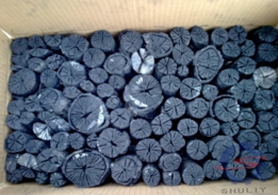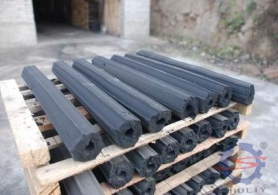If the product quality effect of the machine-made charcoal is compared with the traditional log charcoal, the high-pressure machine-made charcoal has the advantage of the density of the finished carbon product. For the burning effect of the charcoal in use, the machine-made charcoal density is large, and it is presented under the microscope.
The lower the capillary porosity, the longer the burning time of the charcoal in the comparison of the same weight ratio, the machine-made charcoal has the advantages of high carbon content, large calorific value, small volatility and long burning time. It is 2-4 times of ordinary raw charcoal, and it is smokeless and tasteless, so it is favored by users at home and abroad. Machine-Made charcoal technology is also easy to learn for the masses.


The charcoal machine production line has small investment and low cost, ranging from 70,000 to 80,000 and up to 100,000. In the case of everything, only the east wind, the charcoal machine is the top priority.
The currently used fuels such as oil, natural gas, and coal are non-renewable energy resources. The various natures of this nature prompted the FAO to recognize in early 1971 that the most practical use of rice husks in the foreseeable future is to provide energy as fuel.
Charcoal machine manufacturers analyze the suitable bar temperature of charcoal machine equipment is a good factor for production. Rice husk has been used as fuel in rice mills to provide heat or power for more than 100 years. The first record of rice husk is used as an energy source. It was a rice-light burning furnace built in 1889 in Myanmar. This application has not achieved commercial status, which is mainly constrained by unfavorable factors such as large rice husk volume and unstable supply difficulties.
